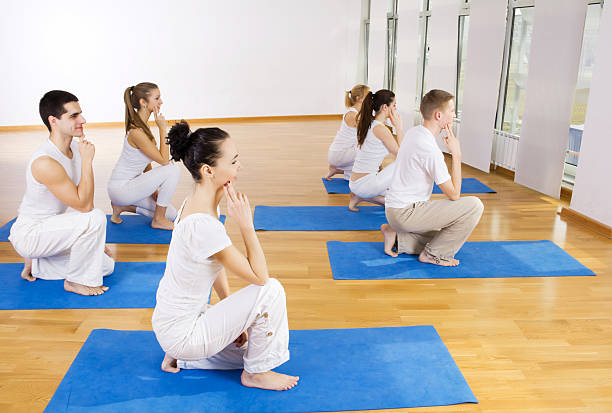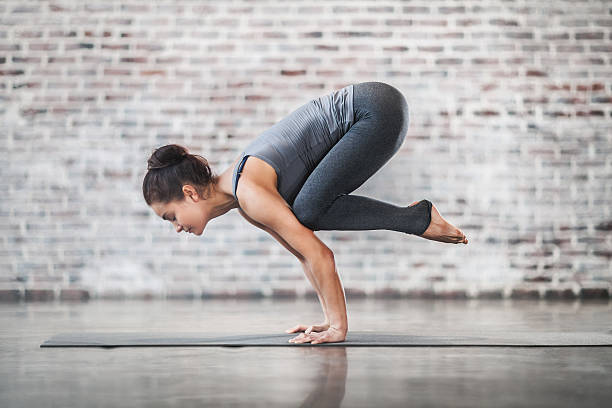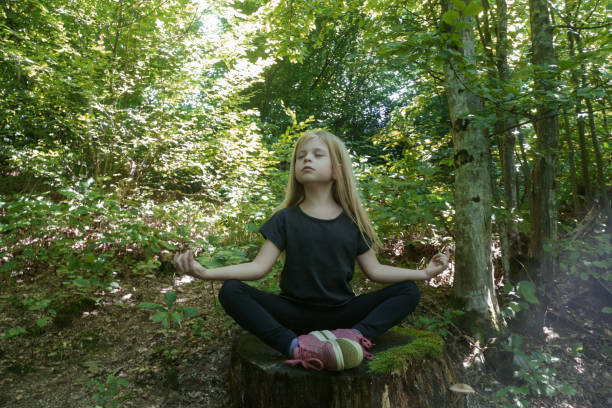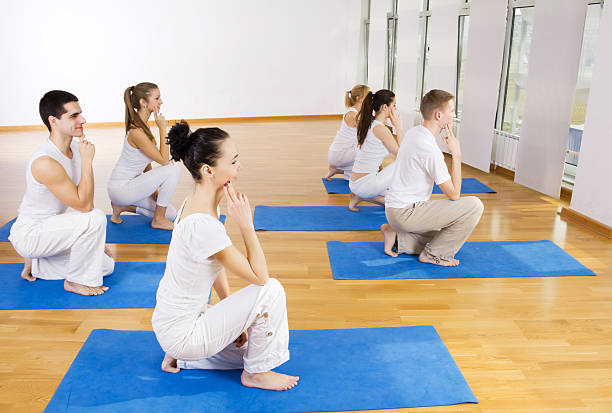
Yoga has a language of its own, and it is not just Sanskrit. While considerable amounts of yoga jargon come from Sanskrit origins, cues and phrases like “stack your shoulders” are also common in yoga classes across the globe.
The basic knowledge of yoga terms and phrases will help you grow as a yogi or yogini. Here is the first part of Common Yoga Lingo, which includes 11 words and three expressions. used words
Ahimsa
Sanskrit word derived from a (nonviolence, without violence) and ahimsa (violence). Ahimsa means nonviolence, kindness, compassion, and non-injury. It is one of the yamas. These are moral principles, foundations of a conscious lifestyle, and basic tenets.
Ahimsa is the nonviolent treatment of all living beings (including animals) and oneself, with no violence whatsoever.
Asana
Asana has many meanings in Yoga. Asana can be interpreted as the position in which yogi(ni), or the postures they adopt, sits.
Patanjali
Asanas are described as a relaxed and firm seated position. A yoga asana can also refer to the physical practice of Yoga, including the yoga postures and poses.
Bandha
Internal body locks are associated with specific energy areas. Bandhas help to control and redirect prana flow by contracting muscles and organs within the body. Mula Bandha is often used in hatha Yoga, along with Uddiyana Bandha and Jalandhara Bandha.
Drishti
View or gaze is the simplest way to describe it. During asana or meditation, the gaze is usually directed in a particular direction. A focused gaze is also useful for developing a concentrated intention.
Ancient and modern yogis both believe that attention follows the gaze. The quality of your gaze can be a reflection of how you think.
Mantra
Sanskrit roots for’man’ (mind; to think) and tra (instrument of thinking). A mantra is a sound or syllable that is repeated during meditation or asana. It has a sacred nature and is intended to inspire practitioners. Om is one of the most common mantras.
Mudra
Hands and fingers are used to create a symbolic and spiritual gesture. Mudras can be seen in Hindu and Buddhist ceremonies. When combined with pranayama, mudras can influence the flow and direction of prana. Common mudras practiced in Yoga are
Jnana/Gyan Mudra: Tips of thumb and index fingers together, and the other three fingers lightly stretched.
Dhyana Mudra: Place the palms up, with the left palm underneath and the right palm facing you, the tips of your thumbs touching.
Anjali Mudra: Pressing the palms together at the heart.
Namaste
Sanskrit origins of names, or bowing forward. Anjali Mudra is a traditional Namaskar or salutation or gesture of respect that involves bending with palms together by the chest or face.
Namaste in Yoga is a greeting for souls. The word can loosely be translated as “I bow to your soul.” However, it can also be used to refer to many other things, such as souls meeting souls and the recognition of places where souls have become one.
Om
The sacred sound or vibrational energy begins and ends with complete silence. The mantra is usually written using the letters O and M. It consists of the four sounds A, U, and M, and then the silence. The mantra encompasses the past, present, and future. It is the eternal syllable for all that exists.
Prana
Sanskrit term for “life force or vital principle” is derived from pra (constant) and a (movement). Prana is a cosmic energy that gives life to the universe and fills it with power. It also sustains creation and life. Prana can be considered the origin of life force. It is the most powerful healing force within the body. Prana flows through the nadis or energy channels within the body.
Sutra
The Sanskrit term for “string” is more commonly used to refer to a type of ancient Indian text that is filled with aphorisms or short statements of truth and observation.
Modern Yoga is perhaps best known for its use of this pose.
Patanjali’s Yoga Sutras are 196 Indian Sutras that were first verbally transmitted and assembled before 400 CE.
Yogi/Yogini/Yogin
Commonly, the term yogi is used to refer to a male or female practitioner. The term yogini is also used to refer to an energy neutral.
All three terms are used to describe a yoga practitioner. Still, they can also refer to ascetic practitioners, spiritual teachers, and individuals who dedicate their lives to spiritual knowledge and enlightenment.
In Vedic Hindu texts, a genderless yogini has transcended the physical form to merge with the Hindu godhead and achieve the highest level of spiritual progress. She sheds her gender identity and becomes a genderless being or spirit.
Breathe in…
The sayings often include phrases like “breathe in your shoulders, exhale to release tension and stress” or “breathing deeply into your heart” to fill it up with love and happiness.
The basic anatomy explains that oxygen inhaled will not be redirected away from the lungs to the lower spine just because you “breathe down your lower back.” Instead, the idea is to focus attention and intention on a specific part of the body.
The next time you feel like rolling your eyes at the thought of “breathing in your kneecaps,” try to change your internal dialogue and affirm that your kneecaps may deserve some love and attention.
Avoid crunching/compressing…
Yoga classes often include phrases like “avoid crushing the lower back” or “avoid compression of the wrists.” Although the intention is good, it’s difficult to understand what crunching your lower back or compressing your wrists feels like.
Yogi pro tip: anytime you hear the phrase “avoid compressing/crunching,” think about what you can lift and lengthen. Weight is often placed on the wrist creases and not distributed evenly in the palms. This can cause wrists to be compressed.
The humerus (long upper arm bone) does not lift back into the joint of the shoulder. The lower back is also often crunched into backbends if the sternum (long bone in the upper arm) is not actively raising to lengthen the vertebrae in the lower spine.
Staple your…
Yoga phrases like “stacking your shoulders over your wrists” or “stacking your heels under your knees” are used to ensure anatomical alignment and safety. The idea is to align the bones so that the muscles can wrap themselves around the supporting bone in an anatomical fashion and maximize the support potential of the bones and muscles.
Focus on stacking each vertebra on top of one another as you flow through your Drishti.
In order to intensify the practice, you can engage your bandhas and breathe into your heart with intention. Then exhale, releasing all that doesn’t serve you. Please comment on any other yoga jargon that you would like to be included in Part 2, as well as your favorite yoga terms.


